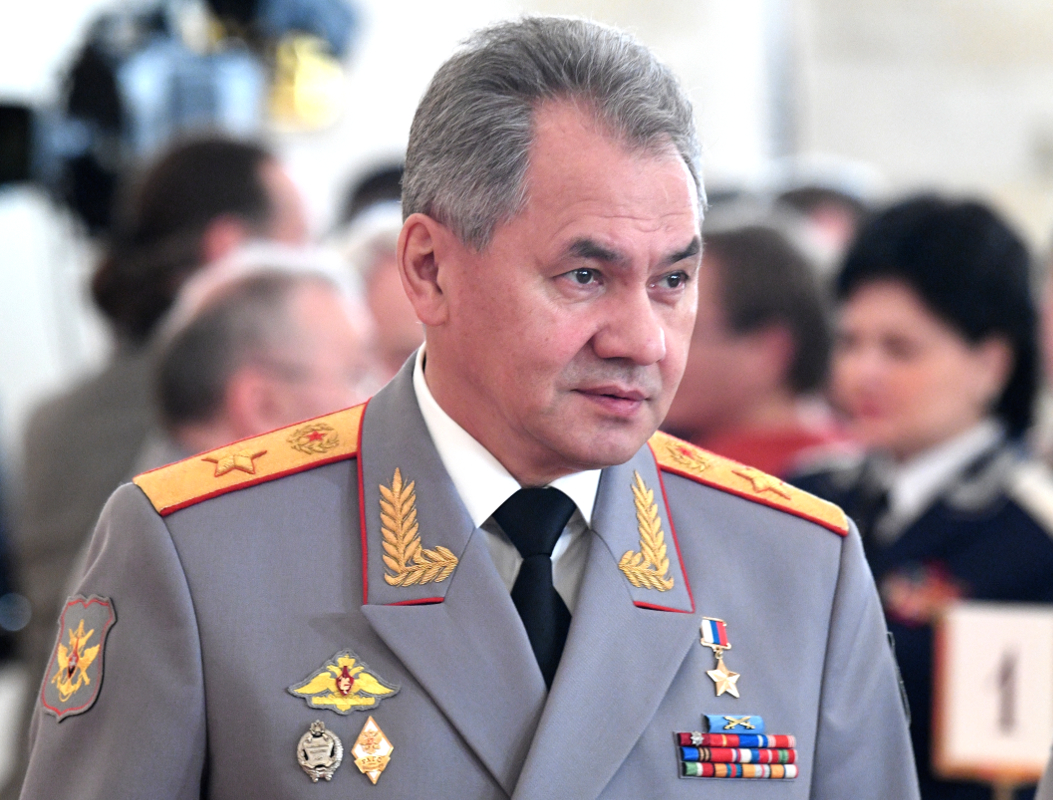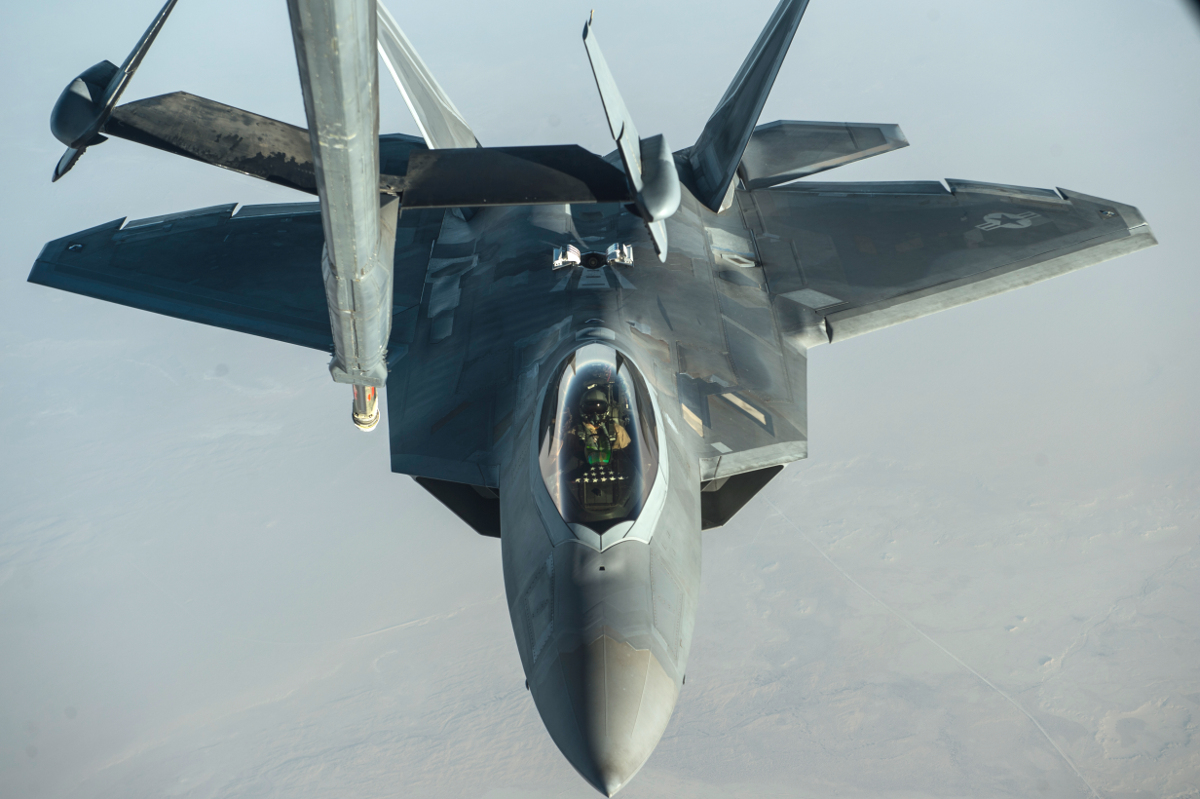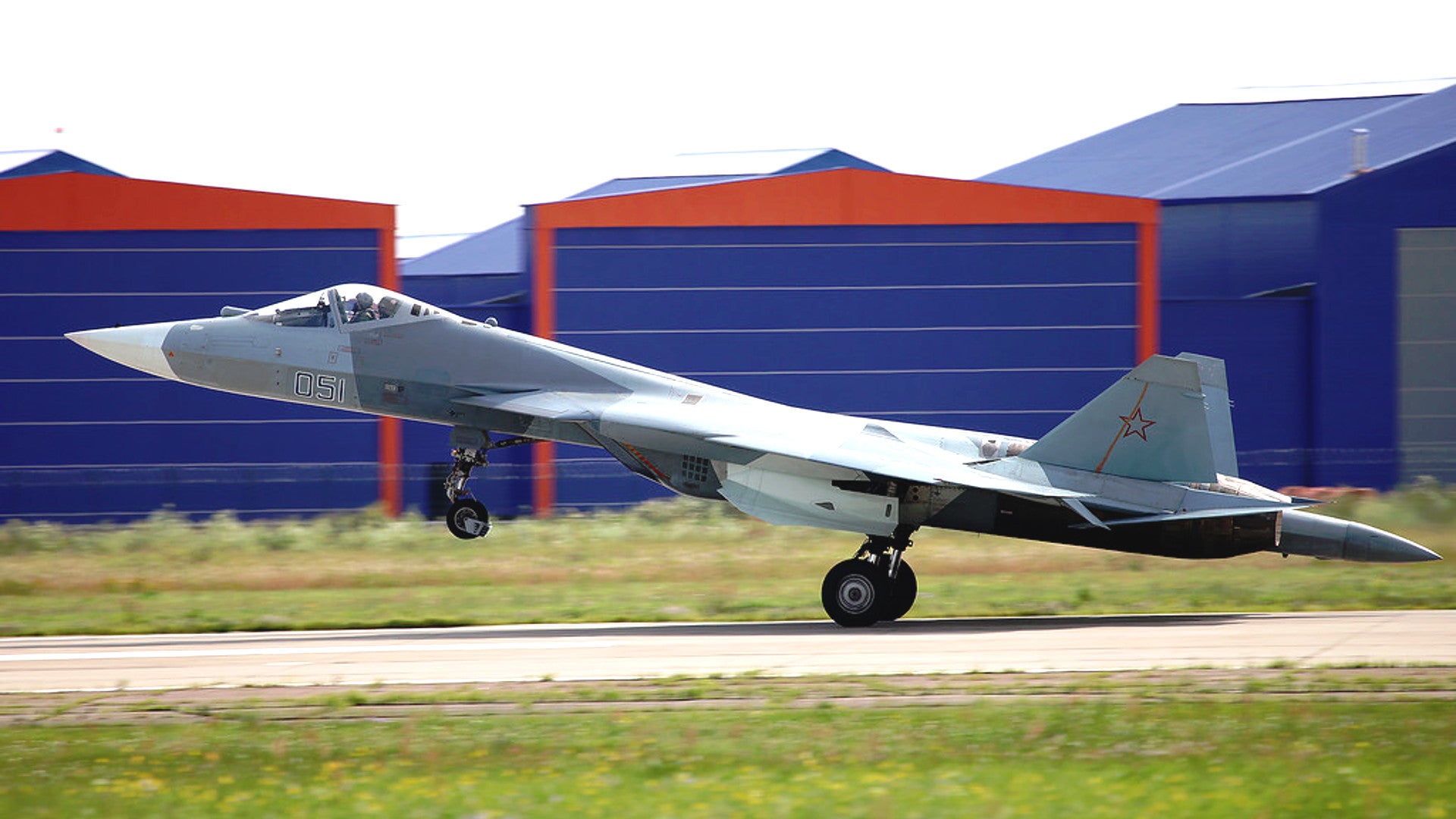After a week of silence from the Kremlin, Russia’s Defense Minister Sergei Shoigu has officially confirmed the country did send two Su-57 stealth fighters to its Khmeimim Air Base in Syria’s western Latakia governorate. But based on his statements, the deployment was even more unusual than we had previously understood, reportedly lasting just two days.
Shoigu shared details about the apparently brief mission with reporters on March 1, 2018 following Russian President Vladimir Putin’s annual state-of-the-nation address, which included major announcements about the country’s strategic deterrent capabilities. Russia’s top defense official said only two of the stealth jets had gone to Syria, denying reports that there might have been up to four in the country, and that they completed a number of evaluations, including an unspecified “combat trial.”
“I can say that the trials were success and the planes returned home a week ago,” Shoigu said. “There were two planes escorted by flying laboratories and test beds monitoring the parameters of weapons work.”
It’s not clear what test and evaluation aircraft he might have been referring to in this case. Video of the Su-57s arriving Khmeimim first appeared on social media on Feb. 21, 2018. Subsequently reports said that an A-50U Mainstay airborne early warning and control aircraft, as well as four Su-35 Flanker-E fighter jets and four Su-25 Frogfoot ground attack aircraft had also arrived at the same time.

We don’t know if Shoigu’s comments about a “combat trial” meant the Su-57s were engaged in any actual operations in Syria against militants fighting the regime of Syrian dictator Bashar Al Assad. There are less than a dozen pre-production examples of the stealth jets, also known as T-50s, and we don’t know how functional the mission systems might be from aircraft to aircraft.
It’s pretty hard to imagine how it would be worthwhile to deploy a pair of largely experimental jets to Syria just for them to stay for 48 hours. The claim that the Russians could have accomplished any meaningful trials in such a short period time, especially combat related ones, are dubious at best.
The deployment, which The War Zone has been following very closely, was never announced. Initial word of it came via video popping up on social media of the fighters arriving, with satellite imagery emerging shortly after confirming the deployment. Only one video has appeared supposedly showing an Su-57s operating from the base, but beyond that the Su-57s operations in and around Syria remain a mystery.

The Russian Defense Minister seemed to deny satellite images of the two aircraft, including one of them parked side by side at Khmeimim along with other aircraft, were even legitimate. “As for the photos which were published, I don’t know where they came from… The planes were inside hangars all the time [when parked]… I can state that now is not the year of 1995 and such planes are never located side by side.”
The tight confines of Russia’s tactical fighter apron at its Syrian base is well documented and has even been cause for concern as an indirect attack could potentially light off a chain reaction. Munitions are also often stored nearby in the open. Around the beginning of 2018, rebels began launching mass drone attacks on the base, as well as Russia’s naval base in Syria’s coastal city of Tartus, and reportedly caused significant damage, possibly in part due to the tightly packed parking situation.

In February 2018, the Russians began erecting some revetments around individual jets, which would help prevent damage to one aircraft from setting off secondary explosions. Another satellite image of one of the Su-57s at Khmeimim appeared to show a full set of barriers surrounding the jet on all sides.
Even more curious, the first imagery that appeared online was dated Feb. 23, 2018, which would have been two days after the aircraft arrived in Syria. Additional video reportedly of the jets flying in Syria also emerged on the web on Feb. 26, 2018, though its not clear when it when it was taken. Shoigu may not have counted the day they arrived, but this detail plus the subsequent footage call into question just how long the aircraft were actually in the country.
All told, much about the reasoning behind the deployment remains unclear. It initially looked like the Russians had intended to showcase the Su-57’s actual capabilities, to partners and potential opponents alike, after years of setbacks and shrinking purchase orders.
“We are buying Su-57 jets for test combat use. First stage state trials are over,” Russian Deputy Defense Minister Yuri Borisov had proudly declared on Feb. 8, 2018. “This year, we will sign a contract for the first batch of 12 Su-57 fighter jets for the Armed Forces.”
There was also talk about a potential interaction between the jets and U.S. Air Force F-22 Raptor stealth fighters, which would have been a historic aerial meetup. U.S. government and other foreign officials suggested the presence of the Russian jets was a worrisome development.

“It’s one thing to do the counter-air mission with a long lookout in front of you, it’s different to do when everyone’s tightly packed in there,” U.S. Air Force General Mike Holmes, head of Air Combat Command had told reporters at the Air Force Association’s Air Warfare Symposium, on Feb. 23, 2018, though he admitted he hadn’t seen the reports about the Su-57s. “Certainly, the higher the complexity and the higher the technology … it raises the level of complexity for the crews to deal with.”
But, we are being led to believe that the deployment ended almost as quickly as it began, which seems difficult to comperehend. Of course, as we have seen many times in the past, just because the Russians withdraw personnel or equipment from Syria doesn’t mean it won’t be headed back to the country soon.
Judging by the peculiar statements made by Defense Minister Shoigu, the dearth of official statements otherwise, and the validity of such a truncated stop in war zone, or lack thereof, it’s very possible, if not somewhat probably, that the aircraft actually have yet to return to Russia at all.
Contact the author: joe@thedrive.com
